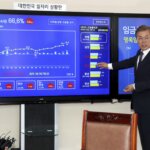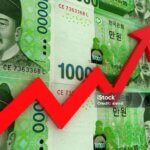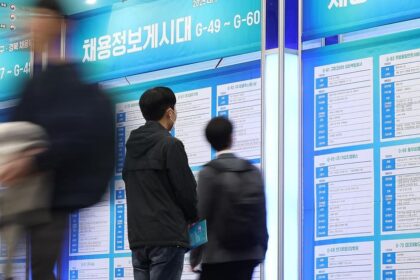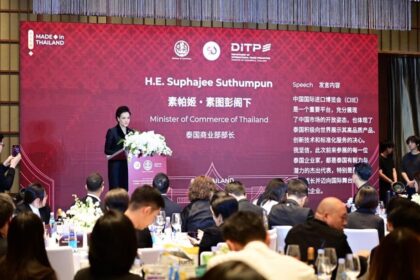A New Dawn for Green Energy?
Bangladesh has officially unveiled its long-awaited Renewable Energy Policy 2025, a landmark legislative update that arrives 17 years after its predecessor. The new policy sets an ambitious target: to generate at least 20% of the nation’s electricity from green sources by 2030, with a further goal of reaching 30% by 2041. To catalyze this transition, the government is offering a suite of powerful incentives, including a 10-year full corporate tax exemption for renewable energy producers, followed by five years of partial exemptions. This comprehensive framework aims to reduce the country’s heavy reliance on fossil fuels, lower energy costs, and bolster energy security. However, while the policy is being hailed as a significant step forward, energy experts and international analysts are raising critical questions about its implementation, financial viability, and consistency with other national energy strategies, creating a complex picture of both promise and peril for Bangladesh’s green future.
The policy represents a fundamental shift in Bangladesh’s energy landscape, empowering a wide range of stakeholders from individual homeowners to large industrial complexes. It allows all types of customers to install renewable energy systems, such as rooftop solar panels, and sell surplus power back to the grid or directly to other consumers. This move towards decentralization is supported by new mechanisms like peer-to-peer (P2P) energy trading and Renewable Purchase Obligations (RPOs) for utilities. Yet, this ambitious vision is launching into a challenging environment marked by policy instability, a significant funding gap, and wavering investor confidence, making the road to 2030 a critical test of the government’s commitment and capability.
The Core Pillars of the 2025 Policy
At the heart of the Renewable Energy Policy 2025 is a multi-pronged strategy designed to dismantle barriers and create a fertile ground for green investment. The policy’s most prominent feature is its aggressive targets. Currently, renewable sources account for approximately 1,563 megawatts (MW), which is only about 5.6% of the country’s total installed capacity of 27,426 MW and meets roughly 8% of current demand. Reaching the 2030 goal of 6,145 MW will require a monumental and rapid scaling-up of capacity, adding nearly 4,600 MW in just over five years.
To fuel this growth, the policy introduces significant financial incentives. The primary lure is a 15-year tax holiday for both public and private renewable energy producers, starting with a full 100% exemption for the first decade, followed by a 50% exemption for the next three years, and a 25% exemption for the final two years. Furthermore, the policy proposes exempting renewable energy components and raw materials from import duties and Value-Added Tax (VAT), a move intended to lower the upfront cost of projects and encourage local manufacturing of solar accessories and other equipment.
Beyond large-scale projects, the policy champions a decentralized energy model. It formally allows residential, commercial, and industrial customers to install renewable systems on rooftops, yards, or other premises. Under the updated Net Metering Guidelines 2018, they can sell excess electricity to government utilities or private entities. A key innovation is the encouragement of peer-to-peer (P2P) trading, a system where individuals with solar panels can directly sell their surplus energy to neighbors or other consumers through the existing distribution network, creating a more dynamic and localized energy market.
A Modern Regulatory and Technological Framework
To manage this new ecosystem, the policy establishes a robust regulatory structure. The Sustainable and Renewable Energy Development Authority (SREDA) is designated as the central nodal agency, responsible for coordinating, managing, and overseeing all renewable energy projects. SREDA is tasked with developing a time-bound implementation roadmap, promoting human resource development, and ensuring the quality of locally produced equipment through the establishment of a national research and testing laboratory.
Two critical market-based mechanisms are also being introduced. The first is a Renewable Purchase Obligation (RPO), which will legally mandate that all power utilities and other designated large consumers purchase a certain percentage of their electricity from renewable sources. The second is the creation of Renewable Energy Certificates (RECs), which are tradable, market-based instruments representing the environmental attributes of one megawatt-hour (MWh) of green electricity. Companies can buy these certificates to meet their RPO targets, creating a flexible and economically efficient way to promote green energy generation across the country.
The policy also takes a broad and forward-looking view of technology. It defines renewable energy comprehensively to include not just solar and wind but also geothermal, tidal power, river currents, wave energy, green hydrogen, biofuels, biomass, and waste-to-energy. It specifically identifies 13 types of solar-based technologies for promotion, including floating solar farms, solar-powered irrigation and drinking water systems, and charging stations for electric vehicles. Crucially, it encourages the coexistence of agriculture and energy production through concepts like agri-voltaics, where solar panels are installed over farmland in a way that allows crops to grow underneath, addressing concerns about land use and food security.
Ambitious Goals Meet Hard Realities: Can Bangladesh Deliver?
Despite the policy’s comprehensive scope and ambitious goals, energy analysts and civil society groups have voiced significant concerns about its feasibility. A recurring theme among critics is the issue of policy inconsistency, which has historically undermined investor confidence in Bangladesh’s power sector. The Institute for Energy Economics and Financial Analysis (IEEFA) points to recent abrupt changes, such as the repeal of the Quick Enhancement of Electricity and Energy Supply Act (QEEESA) 2010, which had allowed for unsolicited project proposals. The government also suspended over 30 renewable projects that had already received Letters of Intent (LOIs) and removed the crucial “implementation agreement clause”—a form of payment guarantee—from new tender documents. Experts warn that without such guarantees, projects are not considered “bankable,” making it extremely difficult for developers to secure the necessary debt financing.
The initial results of this policy shift are worrying. The first tender package for 12 projects totaling 453 MW failed to attract any foreign bidders, forcing the government to extend the submission deadline six times before 20 local companies eventually participated. This lack of foreign interest highlights a critical challenge: the immense funding gap.
The Billion-Dollar Question of Funding
Achieving the 2030 target will require an estimated 750 MW of new capacity to be added each year, a feat that IEEFA argues cannot be funded by domestic capital alone. While the Bangladesh Bank has increased its green refinancing scheme, the loan cap for a single solar park is insufficient for even a modest 10 MW project. Experts like Shafiqul Alam, Lead Analyst for Bangladesh at IEEFA, stress that the country urgently needs affordable, long-term funding from foreign investors, multilateral development banks, and innovative financial instruments like green bonds.
Khondaker Golam Moazzem, Research Director at the Centre for Policy Dialogue (CPD), has criticized the policy for overlooking the vital role of Foreign Direct Investment (FDI), especially at a time when Bangladesh is facing a dollar crisis. He notes that while the policy offers tax breaks, it fails to address the fundamental structural barriers that deter private capital, such as bureaucratic delays and complex land acquisition processes.
This financial uncertainty is compounded by what critics call a lack of a coherent roadmap. Hasan Mehedi of the Coastal Livelihood and Environmental Action Network (CLEAN) points out that the policy sets targets based on installed capacity rather than actual electricity generation, which can be a misleading metric. He argues for annual and five-year roadmaps to track real progress. Experts also lament that the policy was drafted in relative isolation, without sufficient consultation with civil society and with poor alignment with other key national frameworks like the Integrated Energy and Power Master Plan (IEPMP) and the Nationally Determined Contributions (NDCs) for climate action.
Contradictory Signals: The Shadow of Fossil Fuels
Perhaps the most glaring contradiction undermining the new policy is the government’s simultaneous consideration of new fossil fuel projects. Reports that the government plans to revive a 1,200 MW coal-fired power plant in Matarbari have sent mixed signals to the global community. This move is justified as a way to generate cheaper power than oil-fired plants, but analysts see it as a short-sighted decision that directly contradicts the country’s stated climate ambitions. Building a new coal plant would not only lock Bangladesh into carbon-intensive infrastructure for decades but also exacerbate the power sector’s severe overcapacity problem. With a current reserve margin of around 61%, adding more baseload power plants without a corresponding rise in demand threatens to worsen the sector’s already precarious financial position due to soaring capacity payments for idle plants.
Khondaker Golam Moazzem of the CPD voices this concern directly:
“We must recognise that expanding renewable energy within an economic framework heavily dependent on fossil fuels is not practical.”
Global Partnerships and the Path Forward
Amidst these domestic challenges, a significant boost has come from the international community. In a landmark move, the European Union has pledged €1.3 billion to support Bangladesh’s green energy transition. Announced at the Renewable Energy Fest 2025 in Dhaka, this financial commitment is seen as both a catalyst and a test. Dr. Michal Krejza, Head of Development Cooperation for the EU Delegation, emphasized that the funding comes with expectations of systemic reform, including accelerated renewable adoption and stable governance.
This international partnership could help Bangladesh pivot away from its reliance on traditional fossil-fuel-based energy deals and align itself with a global sustainability agenda. The funding also opens doors for deeper collaboration, including the development of a modern smart grid. The Boston Consulting Group (BCG), in partnership with the US Trade and Development Agency (USTDA), has already developed a smart-grid roadmap for Bangladesh. Such a system is crucial for improving grid reliability, reducing losses, and effectively integrating intermittent renewable sources like solar and wind.
The path forward requires a concerted effort to address the criticisms leveled against the new policy. Experts from IEEFA and CPD have laid out a clear set of recommendations. First and foremost is the need for policy stability and consistency to regain investor trust. This includes providing clear payment guarantees and avoiding abrupt changes to the regulatory framework. Second, the government must actively pursue diverse financing mechanisms, including FDI, multilateral funding, and green bonds, while streamlining the approval process for projects. Third, institutional capacity, particularly at SREDA, must be strengthened to handle the massive task of overseeing the energy transition. Finally, all national energy and climate policies must be harmonized to present a single, unified vision for a sustainable future.
There are also promising opportunities within the domestic economy. The Ready-Made Garment (RMG) industry, a cornerstone of Bangladesh’s exports, has immense potential for rooftop solar adoption. Furthermore, the announced interest of major international companies like Chinese solar giant Longi to establish manufacturing facilities in Bangladesh could create jobs, reduce import dependency, and position the country as a regional hub for renewable technology. Tapping into these opportunities will be key to turning the ambitious goals of the Renewable Energy Policy 2025 into a tangible reality.
In Summary
- Ambitious New Targets: Bangladesh’s Renewable Energy Policy 2025 aims to source 20% of its electricity from renewables by 2030 and 30% by 2041, a significant increase from the current level of around 5.6% of installed capacity.
- Strong Financial Incentives: The policy offers a 15-year tiered tax exemption for renewable energy producers and proposes waiving import duties and VAT on green energy components to spur investment.
- Decentralization and Market Mechanisms: It empowers consumers with rooftop solar, introduces peer-to-peer (P2P) energy trading, and establishes a regulatory framework with Renewable Purchase Obligations (RPOs) and tradable Renewable Energy Certificates (RECs).
- Significant Challenges Remain: Experts warn that policy inconsistencies, a lack of payment guarantees for investors, and a massive funding gap pose serious threats to achieving the targets.
- Contradictory Policies: The government’s simultaneous consideration of a new 1,200 MW coal plant undermines its green commitments and could worsen the power sector’s financial strain from overcapacity.
- International Support Offers Hope: A €1.3 billion pledge from the European Union provides a major financial boost, but its effectiveness depends on Bangladesh implementing deep systemic and regulatory reforms.
- The Path Forward: Success hinges on creating a stable and attractive investment climate, developing a clear implementation roadmap, strengthening institutional capacity, and aligning all national energy policies towards a unified green transition.












